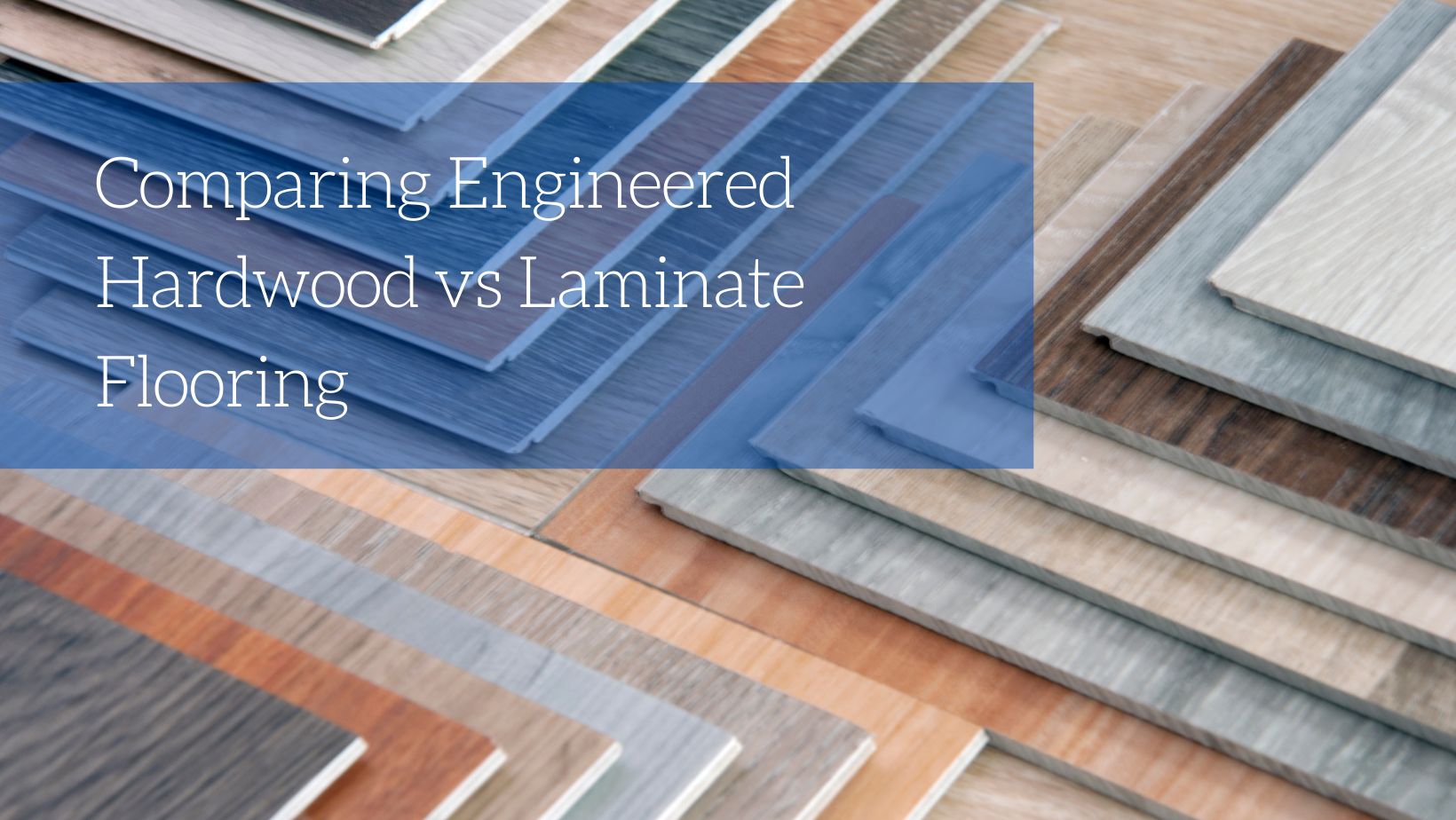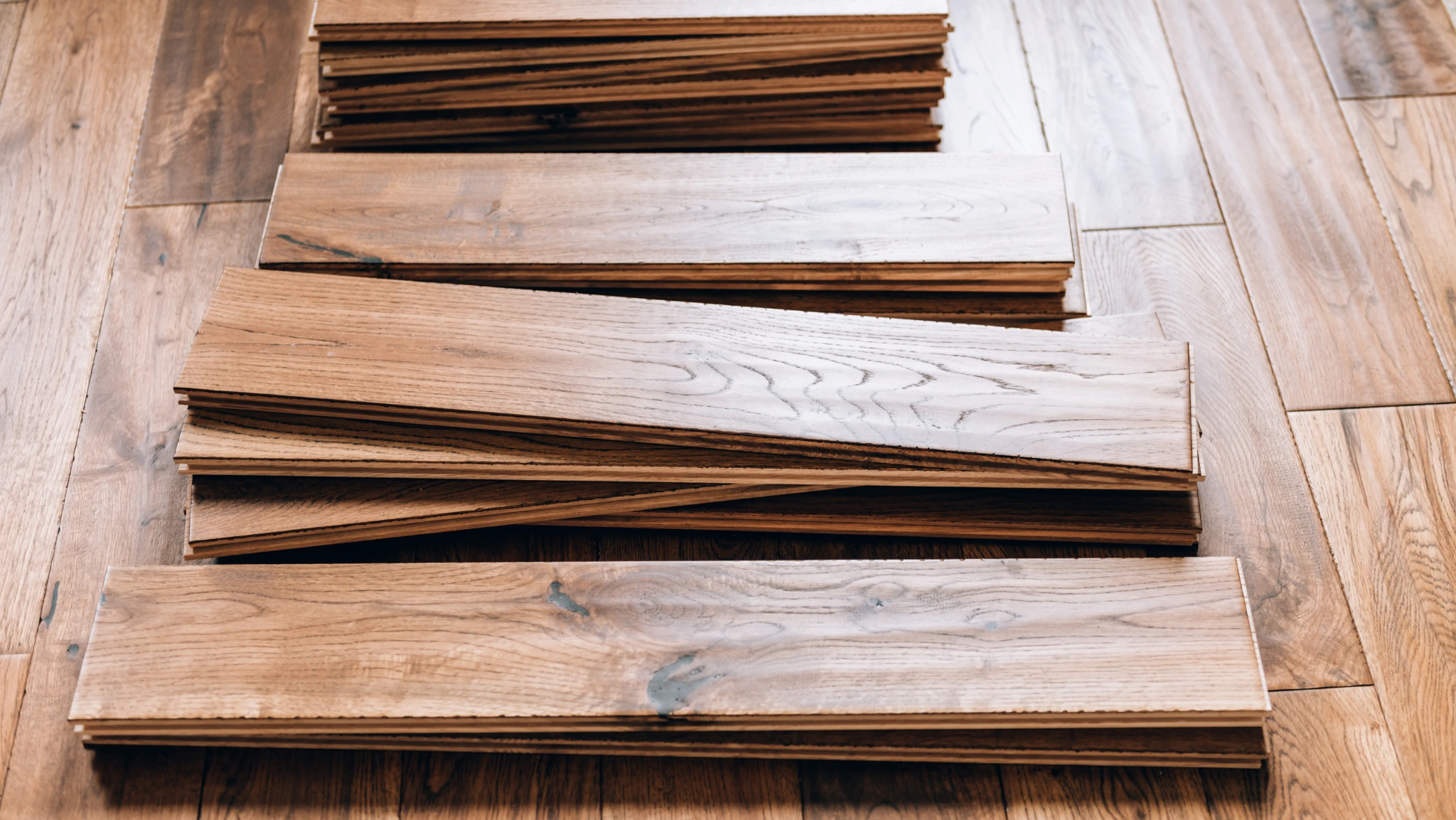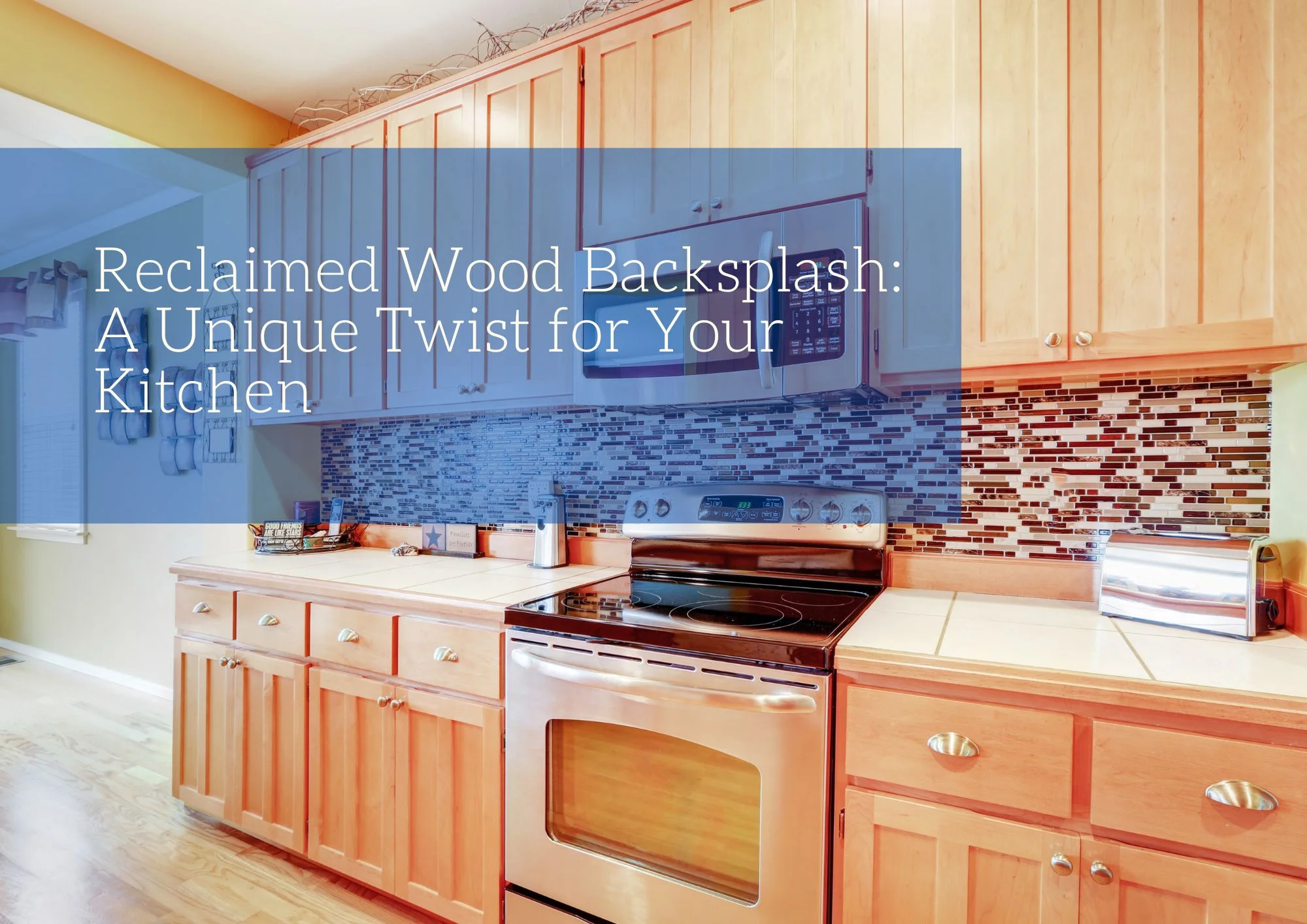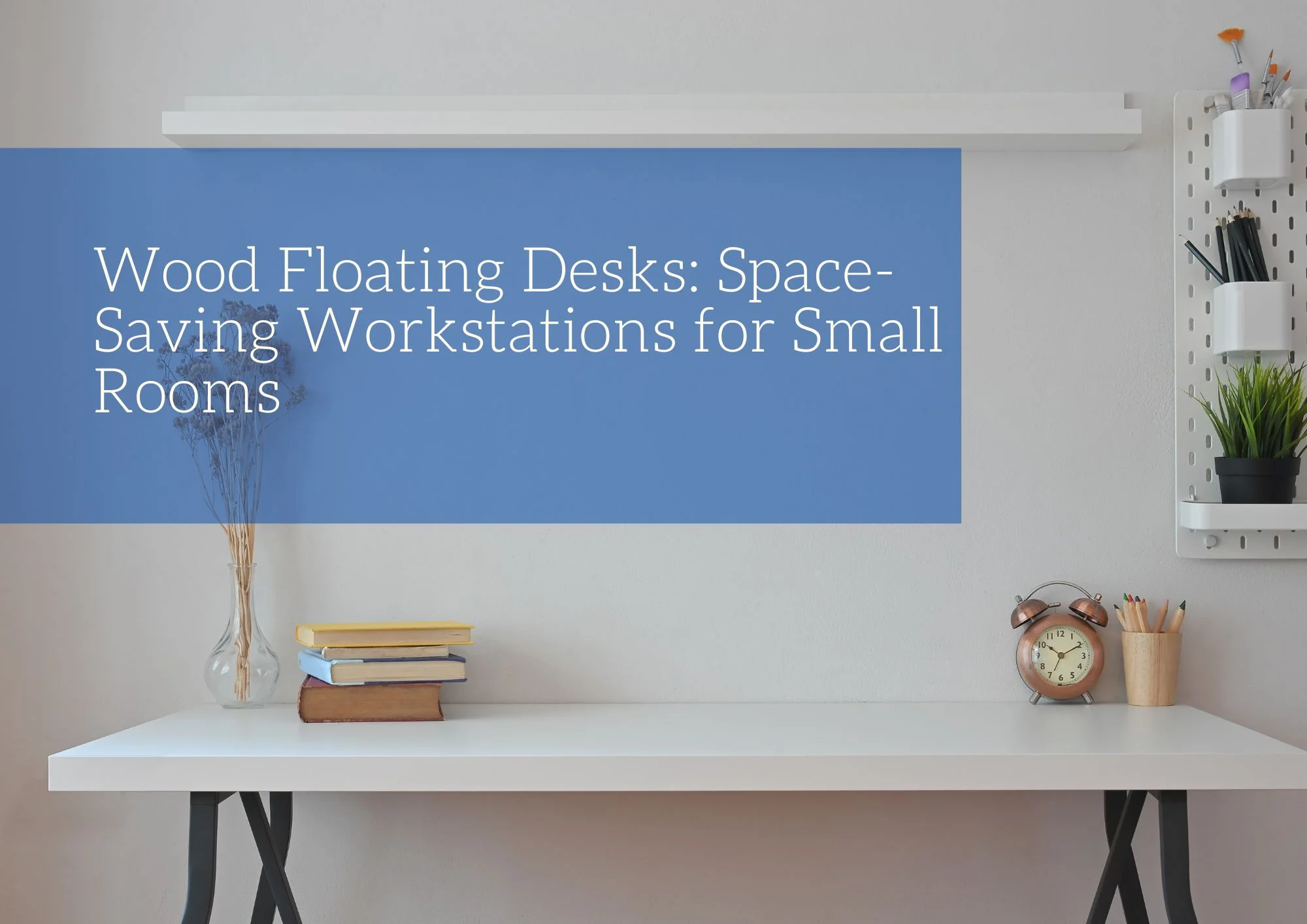Are you in the process of renovating or replacing your flooring? Have you come to a crossroads in deciding between engineered hardwood or laminate flooring for your home? Making this decision is no easy task, as there are pros and cons associated with both materials. In this blog post, we will be comparing the two types of flooring, exploring factors such as cost-effectiveness, durability, and their overall usage before determining which one will best suit your preferences. By comparing different elements of each material’s properties, you can confidently make an informed choice that works best with your lifestyle.
Engineered Hardwood vs Laminate
Laminate Flooring
Laminate flooring is a high density fiberboard (HDF) floor covering with a photographic layer that mimics wood. It is protected by a durable and transparent wear layer.
Rather than being directly placed on the floor, laminate flooring is supported by an intermediate foam or felt underlayment. This layer improves the joining of the boards and reduces footfall noise. Laminate flooring with pre-attached underlayment allows for direct installation on the subfloor.
Engineered Wood Flooring
Engineered hardwood flooring is composed of a stable plywood core topped with a thin veneer of hardwood.
This type of flooring is designed to be installed on top of a subfloor. Like solid hardwood, engineered hardwood comes in panels that interlock using tongue and groove joinery. It can be installed to the subfloor with either nailing or gluing.
Key Differences
Appearance
Laminate
Although laminate flooring has made advancements in replicating the look of wood and other materials, it cannot perfectly duplicate the characteristics of real wood. However, high-quality laminates now feature enhanced embossing of wood grain patterns creating a more realistic flooring experience. Additionally, the introduction of thicker, premium 12 mm laminates has attracted many consumers, including those seeking a sophisticated flooring option for higher-end residences.
Engineered Wood
Engineered hardwood flooring has a distinct advantage over laminate flooring as its surface is made of real wood. This gives it a more appealing, homey, and luxurious appearance.
Maintenance
Laminate
Laminate flooring is the easier of the two flooring types to maintain due to its plastic surface layer which can be easily wiped clean. However, it is important to note that laminate flooring cannot be refinished. In cases of severe damage, the affected laminate planks need to be removed and replaced.
Engineered Wood
Engineered hardwood flooring offers the advantage of being able to be sanded and refinished at least once. If the veneer layer is exceptionally thick, it may even be possible to refinish it two or three times. This makes engineered hardwood a more flexible and durable option for long-term maintenance and restoration.
Durability
Laminate
Despite being marketed as water-resistant, laminate flooring can be vulnerable to water damage due to the fiberboard core and gaps between boards. Though the plastic surface layer does resist water damage as long as any moisture is promptly removed.
Engineered Wood
Engineered hardwood flooring is typically treated with a strong and waterproof surface sealant. However, it’s important to note that both the surface veneer and plywood foundation layers are made of wood and can potentially swell and distort when exposed to moisture.
Cost
Laminate Flooring
Laminate flooring stands out in terms of affordability, making it one of the most cost-effective flooring options available. It can be purchased at home improvement stores for around $1 to $3 per square foot, although more intricate designs can range from $10 to $12 per square foot.
Engineered Wood
Engineered hardwood flooring typically starts at around $4 per square foot at the lower end, with the average price hovering around $8 per square foot. Additionally, with engineered hardwood floors, there may be an additional expense for professional installation, which can exceed $25 per square foot. In contrast, laminates are so easy to install that professional assistance is rarely necessary.
Lifespan
Laminate
Laminate flooring generally has a lifespan of 10 to 20 years depending on the initial quality of the material and the level of wear it experiences.
Engineered Wood
Engineered wood is more durable and can last up to 30 years or more in certain cases.
Sizes
Laminate
Laminate flooring planks typically range from 3 to 7 inches in width and 48 inches in length.
Engineered Wood
Engineered wood boards can come in a variety of widths and lengths, with the narrowest being 2 1/4 inches and the widest being 7 inches; lengths are usually between 36 and 48 inches. Some engineered wood flooring designs feature varying board widths for added visual appeal.
Installation
Laminate
Laminate flooring is highly favored by DIY enthusiasts due to its easy installation process. The planks feature a convenient “click-lock” edge treatment allowing them to interlock and “float” over a foam underlayment layer placed on the subfloor. Most people can install laminate flooring in a room in just one afternoon.
Engineered Wood
While engineered hardwood floors are generally easier to install than solid hardwood floors, professional installation is still recommended. They are typically installed using a method similar to that of solid hardwood, where the boards are blind-nailed to the subfloor using finish nails or staples driven at an angle through the tongues. Alternative installation methods for engineered wood floorboards are available, such as floating them or gluing them down when installing over a concrete subfloor.
When choosing between laminate flooring and engineered hardwood, there are pros and cons to consider for both. Overall, engineered hardwood offers a more natural feel as well as longer durability, making it the better investment option in the long run. However, if budget is your primary concern, laminate can be a great choice with its lower price tag and ease of installation. Regardless of the decision, understanding the differences between these two types of flooring allows an informed consumer to make a wise purchase that ensures peace of mind for many years to come.










